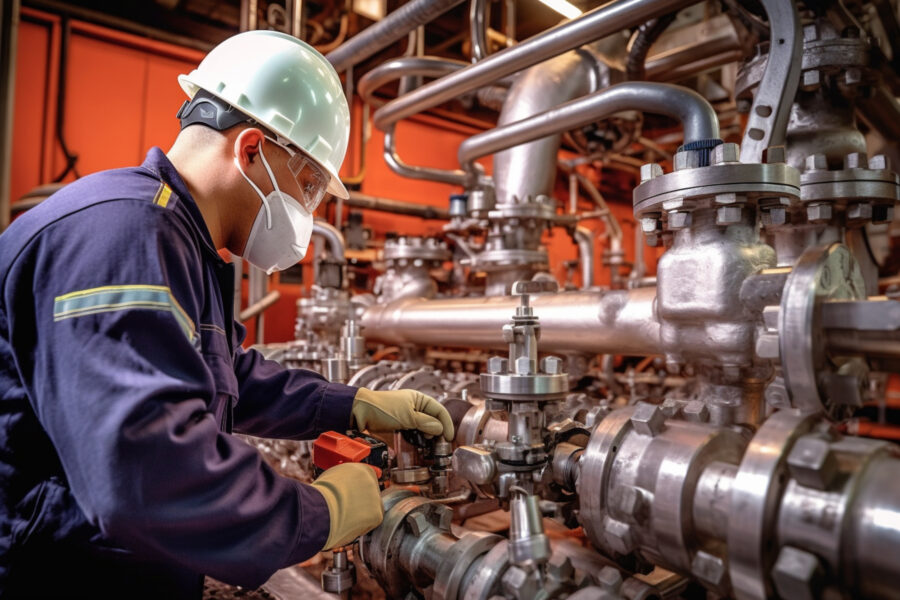Flow control equipment is crucial for numerous industries, and proper maintenance is key to prevent breakdowns and ensure efficiency. Whether you’re working in manufacturing, chemical processing, or any other industry that relies on precise control of fluids, you need to keep your equipment running smoothly. Use this guide to learn the key aspects of flow control valve maintenance and troubleshooting to avoid downtime.
Flow Control Valve Maintenance Tips
Check Installation & Alignment
Proper installation and alignment are crucial for ensuring optimal low flow control valve performance. Following the manufacturer’s instructions is key, as mistakes can result in mechanical damage, leakage, or loss of control.
Follow the manufacturer’s instructions to ensure the valve is installed with:
- Sufficient support
- Insulation
- Protection against external elements
When performing alignment with the piping and actuator, avoid misalignment and bending or twisting. These may impact the valve stem, seat, or plug. Then, routinely inspect valve alignment and clearance to prevent future issues.
Prevent Future Issues
One option our Chemtec experts recommend is installing new flow control valves with a minimum 10-micron filter in-line. This will minimize or even eliminate particulates from building up in the valve, meter, and monitor, preventing future issues down the line. It will also make your preventative maintenance easier, and help your equipment last longer before replacement is needed.
Perform Regular Calibration and Adjustment
Regular calibration and adjustment are essential for maintaining optimal control and responsiveness in a low-flow control valve. Failure to calibrate properly can lead to inadequate process control, wasted energy, or product quality issues. To prevent these, conduct periodic calibration and adjustment procedures using suitable instrumentation and tools.
Calibration should align with process parameters like:
- Flow rate
- Pressure
- Temperature
- Fluid properties
Valves need to be accurate and repeatable. To that end, calibration adjustments are also necessary to eliminate any hysteresis, dead band, or backlash.
Follow Regular Maintenance and Inspection
Diligent maintenance and inspection are required to ensure the continued functionality and durability of a low-flow control valve and to avoid valve failure, leakage, or safety hazards. Adhere to the manufacturer’s guidelines for maintenance and inspection, and utilize appropriate cleaning and lubrication materials.
Regular maintenance should include:
- Cleaning
- Lubrication
- Examination for indications of wear, erosion, corrosion, or fouling
All of these factors can impact the performance and integrity of the valve.
Additionally, various components of the valve will need to be replaced or repaired eventually. Make these repairs promptly when necessary. These components include the stem, plug, packing, seat, seals, and gaskets.
Troubleshooting and Diagnosis
Even with proper maintenance practices, low-flow control valves may encounter issues that require troubleshooting. Potential indicators of problems with your equipment include:
- Erratic flow
- Excessive noise
- Vibration
- Leakage
- Poor control
To address these problems, start by examining process conditions, valve parameters, and the control system of your low-flow control valve. It is also important to use suitable test equipment to pinpoint and isolate the problem source.
Don’t hesitate to consult the manufacturer’s troubleshooting resources for valuable guidance and solutions. Following these steps ensures a thorough diagnosis and effective resolution of any complications your low flow control valve may face.
Submit an Application Inquiry
Maintaining flow control equipment is essential for uninterrupted operations in a variety of industries. By understanding the basics, conducting regular inspections, and promptly addressing issues, you can ensure the longevity and efficiency of your flow control systems. At ChemTec, our Research and Development team works directly with clients to design and build custom parts that can meet your unique needs. Submit an application inquiry or get in touch with one of our developers by calling 954-787-3533.
